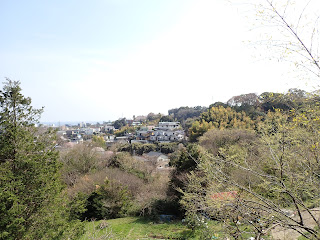- Birth
- Starting preschool
- Matriculation to any school (; this one I find VERY Japanese ... not graduation, you see?)
- Coming of Age
- Starting new job
- Wedding (for newlywed up to diamond+ marriage; sorry, one seedling per couple)
- Age-related celebrations (; it’s to congratulate senior citizens for their longevity when a person reaches the age of 60, 70, 77, 80, 88, 90, 99, and 100.)
- Moving into the City of Yokohama
- Building your home in Yokohama
The tree species distributed can vary each year. The scheme is made possible by helps from nurserymen of JA Yokohama. They have a large say which seedling can be distributed at a particular schedule. As they are professionals, they provide a tree that can be planted relatively easily in Spring/Autumn of Yokohama. Also, they know market trends so that these days olives and blueberries are provided for distribution. There is a cherry tree whose name is Yokohama-hizakura. This is the only cherry in Japan that has a name with Yokohama. The tree was developed by nurserymen in Yokohama in 1972, and obtained in 1985 the legal variety registration based on Plant Variety Protection and Seed Act. It won’t be big as Jamazakura or Somei-Yoshino. The shape of flowers is the same as Somei-Yoshino, but whose color is pinker. It‘s lovely cherry for a private garden of urban environment. Here is the list of seedlings for FY2025.
- Blueberry
- Olive
- Fragrant orange colored olive
- Hydrangea macrophylla
- Yokohama-hizakura cherry
- Chimonanthus praecox
- Japanese maple
- Enkianthus perulatus
- Lady Bank’s rose
- Reeve's spiraea
- Sacred bamboo
 |
| The
seedlings provided for June 2025 distribution. Could you figure out the size? The nurserymen recommended a large enough pot if you plant it in them. |
 |
| The service
pot for giving out. Caution: the number of the pot is limited and so it was distributed first-come-first-served base. |
The origin of this project goes back to 1966. Originally it was a part of baby shower in which the municipality jumped in to celebrate a new citizen of Yokohama, hoping the baby and family would begin to treasure the greenery of neighborhood. At that time, the family of a baby received a partial subsidy to plant a tree in one of these municipal parks. The reaction from Yokohama people was so-so. Money matters aside, to see their tree people had to visit a park that was not necessarily near their home. In 1977, the city introduced the current style of distribution: the city subsidizes 100% for a seedling, and lets the people plant wherever they choose, provided it is legal. Now, on average roughly 6000 seedlings are handed over each year.
 |
| One of
the distribution centre for June 2025, i.e. the atrium of City Hall. On that day there was also a farmers’ market next to the distribution table. |
Sadly, the scheme itself is not much known. More than 60% of citizens of Yokohama live in condo-type housing. i.e. A house with a garden is not a majority. People do not think they are eligible to receive a seedling from the City + don’t know how to nurture a tree (; my post on November 24, 2024). For technical concerns, when we receive a seedling the members of JA Yokohama give us advice how to plant and how to nurture. But the most fundamental issue for the City is how to communicate with the people for this program. By simple math, since 1966 approximately 36 million seedlings have already been distributed in Yokohama to make our community comfortable with trees. On the other hand, Yokohama is a city for 3 million people. 36 million for 60 years is … there is a room for improvement, I guess. Do you have any plans to collaborate for this programme to make our backyard greener? Please visit the HP of the scheme. The next distribution date is October 24-26.
Strategic Planning Division, Green Environment Bureau, City of Yokohama
横浜市みどり環境局戦略企画課
Phone: 045-671-2712
FAX: 045-550-4093























































